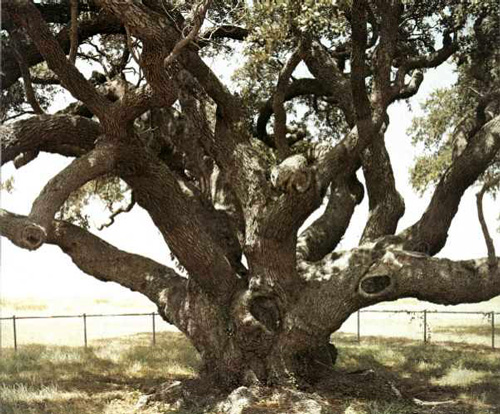
On the gulf coast of Texas, there is one of the largest live oak trees in the state. The tree is protected from man but not the elements of nature. In the 1960s, the Goose Island Oak was recognized by the organization American Forests as the largest live oak in the United States.
This legendary tree was once a place where the cannibalistic Karankawa tribe held councils and pagan ceremonies. During those ceremonies, they would devour their enemies and, sometimes, members of their own tribe. The Goose Oak also can be called a hanging tree. It was a rendezvous of the Comanche Indians so the tree has quite the bloody history.
Earlier visitors to the tree may have included the Spanish explorer Cabeza de Vaca in 1528 and Sieur de La Salle in 1684. Governor Alonso de Leon, who came in 1689 to find La Salle, found instead the ruins of St. Louis and rescued the only three survivors from La Salle’s colony, which had been laid to waste by the Karankawas.
Sometimes, the Goose Island Oak is referred to as the “Bishop’s Tree” because a Catholic bishop’s home or chapel stood nearby in the abandoned townsite of Lamar. The name “Lamar Oak” was probably derived from this town, which flourished in the 1830s. In this day and age, the tree is usually called the “Big Tree.”
In 1966, this former National Champion live oak measured in at 421 ¼ inches in circumference. It was also 44 feet high and had a crown spread of nearly 90 feet. No one has accurately determined its age; however, estimates place it at as much as 1,100 years old.
The “Big Tree” is located at the Goose Island State Park near Rockport. Signs inside the park direct visitors to the site.
For more information on not only the famous trees of Texas but tree news in general, stay tuned to our blog. Weekly, we bring you something new to learn.











